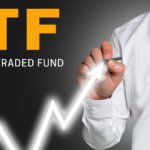
Indian Stock Market Trends: Sensex, Nifty Insights & Top Picks for December 26, 2025
The USA and China stock markets on August 7, 2025? Shocking tariff hikes, intense U.S.-China trade talks, and critical economic data promise a rollercoaster day! Can tech giants like Apple and Tencent defy the odds? Will the Federal Reserve signal rate cuts?
The global financial landscape is heavily influenced by the performance of the USA stock market and the China stock market, two of the world’s largest and most dynamic markets. As we approach Thursday, August 7, 2025, investors are keenly observing the latest developments, economic indicators, and geopolitical events shaping these markets. This professional blog post provides a detailed stock market analysis, offering market predictions for the USA and China stock markets based on the latest news and data. With a focus on USA stock market forecast, China stock market trends, stock market news, and global market predictions, this article aims to deliver actionable insights for Indian investors and professionals looking to navigate these markets effectively.
USA Stock Market: Current Trends and Key Influences
Recent Performance and Economic Context
The USA stock market, comprising major indices like the S&P 500, Dow Jones Industrial Average (DJIA), and Nasdaq Composite, has experienced significant volatility in 2025. After reaching all-time highs earlier in the year, the S&P 500 and Nasdaq faced sharp reversals due to weaker-than-expected economic data and policy shifts. According to a recent report, the S&P 500 advanced 1.47% to 6,329.94, and the Nasdaq surged 1.95% to 21,053.58 on August 4, 2025, recovering from a steep sell-off triggered by a weak Nonfarm Payrolls report and new tariff impositions. The Dow Jones also climbed 1.34% to 44,173.64, marking its best session since May.
The Nonfarm Payrolls report released on August 1, 2025, highlighted a slowdown in job growth, with only 102,000 jobs added in July compared to 147,000 in June. This data, coupled with rising tariff policies under the Trump administration, has increased market uncertainty. The Atlanta Fed’s GDPNow forecast revised Q2 GDP growth to 2.3% from 2.4%, reflecting cautious economic projections. Treasury yields have also declined, with 10-year yields dropping to 4.24% from 4.38% and two-year yields falling to 3.74% from 3.92%, signaling expectations of potential Federal Reserve rate cuts in September 2025.
Key Events Shaping Thursday, August 7, 2025
Several economic reports and corporate earnings are expected to influence the USA stock market on Thursday, August 7, 2025. Key data releases include:
- Consumer Credit (June) at 3:00 p.m. ET, which will provide insights into consumer borrowing trends.
- Continuing Jobless Claims (July 26) and Initial Claims (August 2) at 8:30 a.m. ET, offering updates on labor market health.
- Productivity and Unit Labor Costs (Q2 Preliminary) at 8:30 a.m. ET, critical for assessing economic efficiency.
- Wholesale Inventories (June) at 10:00 a.m. ET, reflecting inventory levels and trade dynamics.
Major companies reporting earnings on Thursday include Live Nation Entertainment, Block, Take-Two Interactive Software, GoDaddy, Wynn Resorts, Gilead Sciences, Trade Desk, Insulet, Expedia Group, Motorola Solutions, Microchip Technology, Akamai Technologies, Ralph Lauren, Parker-Hannifin, Warner Bros. Discovery, ConocoPhillips, Martin Marietta Materials, Eli Lilly, Zimmer Biomet Holdings, EPAM Systems, Kenvue, and Constellation Energy. These earnings will provide insights into corporate performance amidst tariff pressures and economic uncertainty.
Tariff Policies and Trade Talks
The Trump administration’s tariff policies remain a significant driver of market sentiment. On August 1, 2025, President Trump signed an executive order raising tariffs on most U.S. trading partners, effective August 7, 2025, with average tariff rates rising from 2% to approximately 18%. Ongoing U.S.-China trade talks in Stockholm, led by U.S. Treasury Secretary Scott Bessent and Chinese Vice Premier He Lifeng, have raised hopes of a potential deal, with Bessent noting “the makings of a deal”. However, posts on X suggest that Trump’s vow to impose a 100% tariff on chips could pressure technology stocks, particularly those reliant on Chinese supply chains.
USA Stock Market Prediction for August 7, 2025
Given the recent bounce-back in major indices and the anticipation of key economic data, the USA stock market is likely to experience cautious optimism on Thursday. The S&P 500 and Nasdaq may see mild gains, driven by technology and healthcare sectors, with companies like Apple and Eli Lilly potentially leading due to strong earnings expectations. However, the 100% chip tariff announcement could weigh on semiconductor stocks like Microchip Technology and AMD, creating sector-specific volatility. Investors should monitor Consumer Credit and Jobless Claims data, as weaker-than-expected figures could dampen sentiment and increase expectations for a Federal Reserve rate cut in September, currently priced at 75.5% probability.
China Stock Market: Current Trends and Challenges
Recent Performance and Economic Indicators
The China stock market, tracked by indices like the Hang Seng Index, Shanghai Composite, and CSI 300, has faced challenges in 2025 due to weak domestic demand and global trade uncertainties. On August 1, 2025, the Hang Seng Index declined 1.07% to 24,507.81, and the CSI 300 fell 0.51% to 4,045.93. The S&P Global China Manufacturing PMI dropped to 49.5 in July from 50.4 in June, indicating a contraction in factory activity, exacerbated by high temperatures, heavy rain, and flooding. The official PMI also weakened to 49.3, a three-month low, signaling slower economic growth in the coming months.
Despite these challenges, Chinese stocks have shown resilience in certain sectors, particularly technology and semiconductors. For instance, Samsung Electronics surged 6.07% after securing a $16.5 billion contract to supply semiconductors to Tesla, highlighting the global demand for Chinese and regional tech components.
Key Factors Influencing Thursday, August 7, 2025
The China stock market is heavily influenced by U.S.-China trade negotiations and domestic economic policies. The ongoing trade talks in Stockholm, with a deadline extended to August 12, 2025, are critical. A potential deal could boost Chinese equities, particularly export-driven sectors like technology and manufacturing. However, the threat of 75% tariffs on Chinese imports to the U.S., as projected by Deloitte, could dampen market sentiment if negotiations stall.
Additionally, the Lunar New Year effect, typically occurring in late January or early February, often leads to volatility in Chinese markets due to a surge in pre-holiday manufacturing and consumer spending followed by a slowdown. Although this effect is less relevant in August, the lack of fresh economic data until mid-March may keep investors cautious.
China Stock Market Prediction for August 7, 2025
On Thursday, August 7, 2025, the China stock market is expected to open lower, reflecting concerns over Trump’s 100% chip tariff announcement. The Hang Seng Index and CSI 300 may face downward pressure, particularly in technology and semiconductor stocks. However, positive developments in U.S.-China trade talks could trigger a relief rally, especially if reports confirm progress toward a deal. Investors should watch for updates from Stockholm and monitor export-oriented companies like Alibaba and Tencent, which could benefit from reduced tariff fears.
Global Market Dynamics: USA and China Interplay
Tariff Impacts and Global Trade
The interplay between the USA and China stock markets is heavily influenced by global trade dynamics. The Trump administration’s tariff hikes, averaging 18% across trading partners and potentially 75% on Chinese imports, have raised concerns about inflation and supply chain disruptions. Companies like Ford Motor have warned of a $2 billion hit from tariffs in 2025, while Caterpillar and Eaton have reported challenges due to higher costs. In China, front-loading by exporters ahead of tariff hikes has provided temporary support, but weak domestic demand remains a concern.
Federal Reserve and Bank of Japan Policies
The Federal Reserve’s decision to maintain the federal funds rate at 4.25%–4.5% has kept markets on edge, with expectations of two rate cuts by year-end 2025. Fed Chair Jerome Powell’s cautious stance on tariffs’ inflationary impact has tempered expectations for immediate cuts, but the weak jobs report has raised the probability of a September cut to 75.5%. In contrast, the Bank of Japan maintained its rate at 0.5%, with upward revisions to inflation forecasts (2.7% for fiscal 2025), signaling potential rate hikes later in 2025. These divergent monetary policies could influence capital flows, with a stronger yen potentially impacting Chinese exports and U.S. multinationals.
Sector-Specific Opportunities
- Technology: In the U.S., Apple, Microsoft, and Amazon are expected to drive gains, with Apple’s $100 billion U.S. manufacturing commitment boosting sentiment. In China, tech giants like Alibaba and Tencent may see volatility due to tariff risks but could rally on positive trade news.
- Healthcare: U.S. healthcare stocks like Pfizer and Eli Lilly are undervalued, with forward P/E ratios near decade lows, offering opportunities for Indian investors. In China, healthcare firms like Novo Nordisk face challenges from tariff pressures but remain resilient.
- Semiconductors: The 100% chip tariff could pressure U.S. firms like AMD and Chinese suppliers, but companies with diversified supply chains may outperform.
Investment Strategies for Indian Investors
Diversification and Risk Management
Indian investors should adopt a diversified portfolio to mitigate risks from USA and China stock market volatility. Exposure to U.S. ETFs like the SPDR S&P 500 ETF (SPY) or Invesco QQQ Trust (QQQ) can provide broad market access, while China-focused ETFs like the iShares MSCI China ETF (MCHI) offer exposure to Chinese equities. Given the high Shiller P/E ratio of 37.94 for the S&P 500, indicating overvaluation, investors should focus on undervalued sectors like healthcare and select small-cap stocks.
Long-Term Perspective
Despite near-term uncertainties, the USA and China stock markets have a history of recovering from corrections. The S&P 500’s resilience post-2022 bear market and China’s potential for a 2017-like rally suggest long-term opportunities. Indian investors should avoid market timing and focus on fundamentally strong companies with stable earnings and attractive valuations.
Monitoring Key Indicators
- Economic Data: Track U.S. Consumer Credit, Jobless Claims, and China’s PMI for real-time insights.
- Trade Developments: Follow U.S.-China trade talk updates, as a deal could significantly boost both markets.
- Corporate Earnings: Analyze earnings from tech and healthcare firms for sector-specific trends.
Final Thought
On Thursday, August 7, 2025, the USA stock market is poised for cautious gains, driven by technology and healthcare earnings, though semiconductor stocks may face pressure from chip tariffs. The China stock market could open lower due to tariff concerns but may rally on positive trade talk developments. Indian investors should stay informed, diversify their portfolios, and adopt a long-term approach to capitalize on opportunities in these dynamic markets. By monitoring economic data, trade policies, and corporate earnings, investors can navigate the complexities of the USA and China stock markets effectively.































